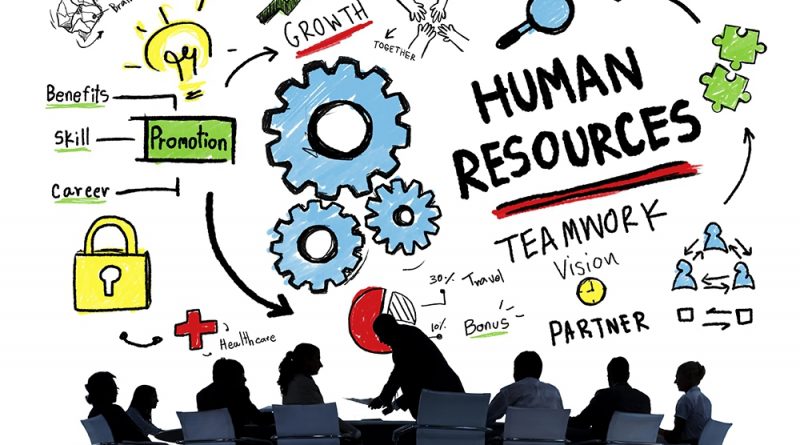INVESTMENTS IN HUMAN CAPITAL REQUIRE BOLD FINANCING ACTIONS FOR A RESILIENT RECOVERY
HANA BRIXI & CHIARA BRONCHI
Essential priorities are restoring health, protecting children from malnutrition and harm, bringing students back to school and recovering learning losses, and supporting job opportunities.
Inclusive investments in health, early childhood development, learning, and women’s economic empowerment can contribute to an inclusive, resilient, and sustainable recovery. This was the clear message, focusing on human capital, that the ministers of finance and planning of 81 Human Capital Project HCP countries sent at the last Ministerial Conclave.
School closures due to the COVID-19 pandemic and the increased likelihood of school dropout have eroded the knowledge and skills of the current generation of school children, especially those from poor and vulnerable households. Learning poverty is expected to increase from 53 percent to 63 percent in low- and middle-income countries. Worldwide, at least 24 million children, from pre-primary to tertiary level education might never return to school.
This, combined with deskilling due to prolonged unemployment and underemployment, will likely lower future productivity and earnings. Further, the pandemic has exacerbated inequalities: women suffer disproportionately from joblessness, domestic care burdens, and gender-based violence, as well as from unintended pregnancies and maternal deaths.
Priority to restore human capital
Ensuring the adequacy, efficiency, and sustainability of public spending toward human capital outcomes has become most urgent. Unless addressed decisively, the scars of the COVID-19 shock on human capital and future productivity could become permanent.
The challenge is how to prioritize – translate money into better human capital outcomes and secure adequate resources. The World Bank Approach Paper, Investing in Human Capital for a Resilient Recovery: The Role of Public Finance, which framed the Conclave, seeks to provoke ideas and solutions. Human capital is a special theme of the World Bank’s IDA20 replenishment drive to help the poorest countries mitigate the impacts of the pandemic and transition to a green, resilient and inclusive recovery.
Immediate investments are needed to reduce permanent losses and position human capital for economic recovery. Essential priorities are restoring health, protecting young children from malnutrition and other harm, bringing all-age children back to school and recovering learning losses, and supporting labor income opportunities.
In the medium term, sustained economic recovery hinges on further improvements in universal health coverage, early childhood development, learning and skills development, relevance of tertiary education to the labor market, adaptive social protection, and women economic empowerment.
How to secure resources for human capital priorities?
Human capital outcomes need to be placed at the center of the budget process to prioritize expenditure that contributes to human capital accumulation and utilization. Securing resources for human capital priorities can involve finding space within existing budgets and pursuing cost-effective reforms.
When fiscal adjustments are needed, countries can identify and protect specific budget lines that are critical for the continuation of services with long-term implications on growth, development, and human capital outcomes.
Domestic revenue mobilization can also contribute to the goal. Six broad policies can help countries raise domestic revenues and create a fiscal space for public spending, including on human capital: (a) broadening the tax base; (b) increasing the tax burden on high income and wealth taxpayers; (c) earmarking and ringfencing some funding streams for human capital; (d) introducing health taxes on harmful consumption; and (e) using environmental taxes to generate health and climate co-benefits.
In addition, the increased devolution of education and health spending toward local governments highlights the importance of local finances, especially property taxation. Moving forward, debt restructuring, sustainability bonds, sovereign wealth funds, and private funding can be leveraged to support green investments and the required reskilling of the workforce.
The Conclave shared inspiring examples of countries securing resources for human capital priorities. Guyana, for example, has prioritized human capital investments as part of its Low Carbon Development Strategy.
To incentivize sub-national governments, India is subordinating the release of funds earmarked for local governments to specific human capital outcomes. Both India and Indonesia emphasized fiscal consolidation and revenue reform as well as reprioritization of expenditures toward human capital and climate change for a more sustainable and green recovery.
Not just greater, but more effective and innovative spending
Improving governance and leveraging innovation and technology can help translate fiscal policies into human capital outcomes. Studies show that merely increasing spending in education or health does not necessarily translate to better outcomes. What is required is clear policy prioritization based on evidence; a focus on outcomes and accountability for results, facilitated by digital technologies; and strong coordination across ministries, agencies, and jurisdictions.
Much can be learned from recent examples. Since the end of 2020, at least ten education systems worldwide are participating in the “Accelerator Program” to accelerate learning poverty reduction. Developed to demonstrate that strong political and financial commitment, sound policy design, and a relentless focus on learning outcomes can speed up countries’ progress in improving foundational learning, the Accelerator Program coordinates efforts across the partners to ensure that the countries in the program are showing improvements in foundational skills at scale over the next three to five years. Initially, ten countries or subnational entities are participating in the Accelerator program: Brazil (the state of Ceará), Ecuador, Kenya, Morocco, Mozambique, Niger, Nigeria (Edo State), Pakistan, Rwanda, and Sierra Leone.
In the Republic of Korea, Singapore, and Taiwan, Province of China, crisis response units at the center of government led a coordinated response, drawing on comprehensive real-time information. Such an approach will also be vital for countries to manage the restoration of human capital and for a green and resilient recovery because combating climate change is a similar multisectoral and multijurisdictional challenge.
Investments must involve building resilient service delivery systems. Key areas include strengthening health systems for pandemic preparedness with people-centered primary health care systems; improving education service delivery to ensure disadvantaged children are not left behind; and making sure that social protection and labor systems can adapt nimbly to changing needs.
Many governments are already accelerating the digitalization of their education, health and social protection systems and reimagining service delivery systems in a digital world, in partnership with the private sector. Kenya invested in ICT and digital infrastructure in schools to help students regain learning losses and promote youth employment opportunities. With the vaccine rollout, Saudi Arabia leveraged digital registries to include high-risk segments of the population. Brazil created the integrated digital platform SineSaúde (National Employment System-Health) to promote and facilitate the hiring of professionals to improve health-service delivery during and following the pandemic (Government of Brazil 2020).
By building digital infrastructure and strengthening institutions for improved service delivery, countries can mitigate the impact of crises on human capital, facilitate an efficient fiscal response to crises, and drive a strong recovery.
The time to act is now
It is reassuring to hear ministers of finance and planning discuss how investments toward human capital accumulation and utilization are productive and critical for a green, resilient and inclusive recovery. The high level of political commitment represents a unique opportunity for consensus around mobilizing and deploying more and better resources to invest in people and help them achieve their potential.
Let’s push the envelope of the possible technical solutions – including through analytical work, operations, leveraging technology and the proposed IDA-20 policy commitment on financing human capital. Now is the time to raise the game in policy making, service delivery, fiscal planning, and preparedness – to protect and invest in people, and shape a brighter future.
(World Bank Blogs)
Photo Credit: HR Daily Advisor




